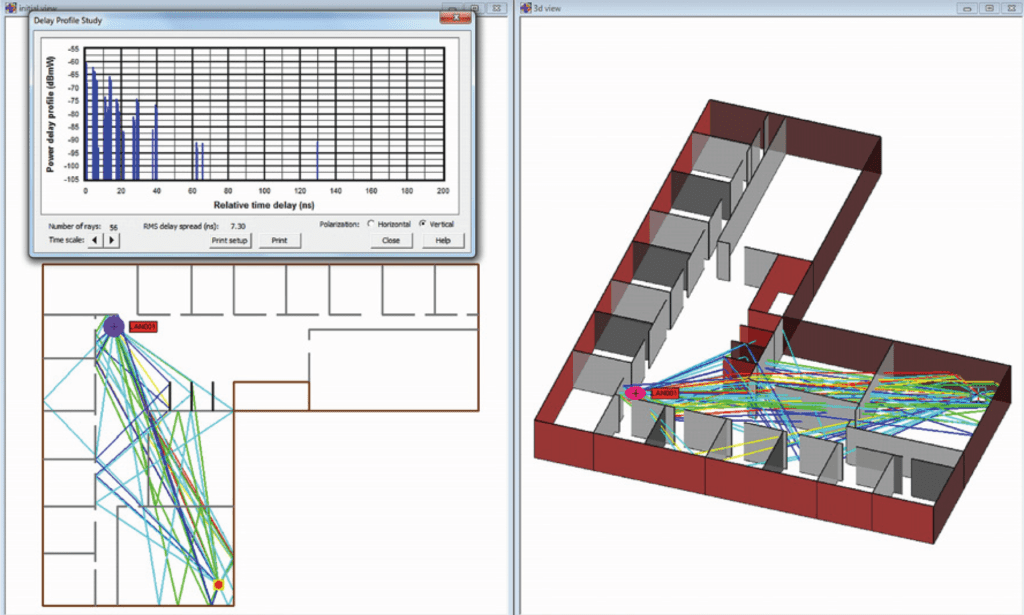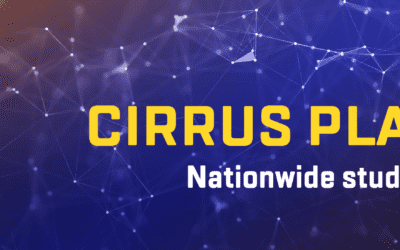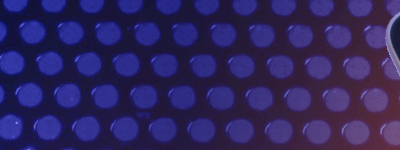Ray-tracing is a high-frequency approach to modeling how wireless signals interact with features of the environment such as walls, corners, edges and foliage. The models in this module use the image approach to ray-tracing which comprehensively considers all the features of the environment regardless of how small. This differs from the ray-launching approach to ray-tracing which uses rays launched at fixed angular separations to determine wireless signal propagation. Ray-tracing takes into account the five dominate interactions of wireless signals with the environment:
- Free space propagation including atmospheric loss
- Wall reflection
- Corner and edge diffraction
- Wall and foliage transmission
- Scattering due to wall roughness
Unlike propagation models that consider only one or two paths between the transmitter and receiver, and thus are necessarily narrowband models, ray-tracing models consider multiple paths between the transmitter and receiver and can therefore depict the time and frequency dependent broadband characteristics of the channel.
EDX’s Advanced Propagation Module can show graphs of the time domain impulse response of the channel anywhere in your wireless network service area, as well as display maps of RMS delay spread.

The Advanced Propagation Module provides a cost-effective approach for doing highly accurate site-specific wireless propagation calculations that explicitly take into account detailed building and floor plan features describing the propagation environment. It includes three specialized propagation models that all use ray-tracing techniques:
- 2D ray-tracing
- 3D indoor ray-tracing
- 3D outdoor ray-tracing
EDX’s ray-tracing models make use of exact descriptions of the buildings and other features of the environment where your wireless network will be deployed. You can independently specify the conductivity, permittivity, transmission loss, and wall roughness as a function frequency for all the building and wall features describing your environment. The model calculation results include:
- Median pathloss
- RMS delay spread
- RMS angular spread
- Individual 3D ray trajectories which can be displayed on your map
An added benefit to EDX’s approach to ray-tracing provides for RMS angular spread which can be a useful indicator of available capacity enhancement when using MIMO or other advanced adaptive antenna systems.
Because of its comprehensive image-based approach, the ray-tracing models in EDX’s Advanced Propagation Module are best suited to network deployments in indoor, campus-wide or other relatively small-scale outdoor situations where the number of structures and walls is limited. It can handle propagation calculations between floors in multi-floor buildings as well as indoor-to-outdoor (and outdoor-to-indoor) calculations for wireless networks deployed in commercial or academic campus-wide situations.









